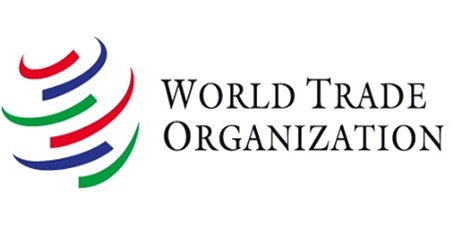On 28 July 2017 the WTO issued the latest annual statistical report World Trade Statistical Review 2017. This publication examines trends in trade in goods and services and trade policy developments including restrictive trade practices.
World merchandise exports have risen by around 32% in value since 2006 to USD 16 trillion in 2016, and exports of commercial services have increased by around 64% in the same period, reaching USD 4.77 trillion in 2016. However trade growth in terms of volume of merchandise showed its lowest growth since the financial crisis, at 1.3% in 2016. This was half the growth rate of the previous year. This is due partly to low growth of world GDP at 2.3%, down from 2.7% in 2015. Growth in world trade is expected to rise slightly in 2017 to 2.4%.
In recent years the ratio of global trade growth to GDP growth has fallen to around 1:1 from an average of around 1.5:1 since 1946. In 2016 the ratio was 0.6:1, falling below 1 for the first time since 2001.
International trade is still concentrated within a few countries with the highest ten trading nations accounting for more than half the global trade in merchandise and commercial services. The share of developing countries in world merchandise trade is 41% and their share of trade in commercial services is 36%. Trade between developing countries is rising and accounted for more than half their total exports in 2015. However those countries classified as least developed countries (LDCs) still have a share of less than 1% in exports of merchandise and commercial services.
Digital trade
The increasing use of new technologies is expected to have a positive impact on digital trade in future with opportunities for entrepreneurs and small businesses. To analyze these trends and formulate good policy in the area improved statistics are necessary. The WTO and OECD have therefore put together an inter-agency task force to take the issue forward.
Trade policy trends
From mid-October 2016 to mid-May 2017 WTO members implemented 74 new trade restrictive measures, a decrease on the amount recorded in the previous annual report. Trade restrictive measures include new tariffs on import or exports; increases in existing tariffs; import bans or quantitative restrictions; more complex customs regulation or procedures; or restrictive changes to local content requirements. The measures could be temporary or permanent.
In the same period WTO members introduced 80 measures to facilitate trade. However the trade coverage of the import-facilitating measures is more than three times the amount in value of the estimated trade coverage of the import restrictive measures. Trade facilitating measures include the elimination or reduction of tariffs on imports or exports; simplified customs procedures; elimination of import or export taxes; or elimination of quantitative restrictions on imports or exports.
Trade facilitation agreement
The report notes that the WTO’s Trade Facilitation Agreement (TFA) entered into force in February 2017. The agreement aims to save trade costs for WTO members by simplifying and standardizing customs procedures and facilitating the flow of goods across borders.
Developing countries are permitted to set their own timetable for implementation according to their capacity. They can also obtain access to capacity-building resources to enable them to implement the agreement. The WTO has established a Trade Facilitation Agreement Facility to assist developing countries in assessing their needs and finding potential development partners. Developing countries are requested to set out the provisions of the TFA that they can implement immediately, the provisions that will require more time for implementation and those that may require capacity building support. The various commitments therefore provide a road map for the full implementation of the agreement by all WTO members.












